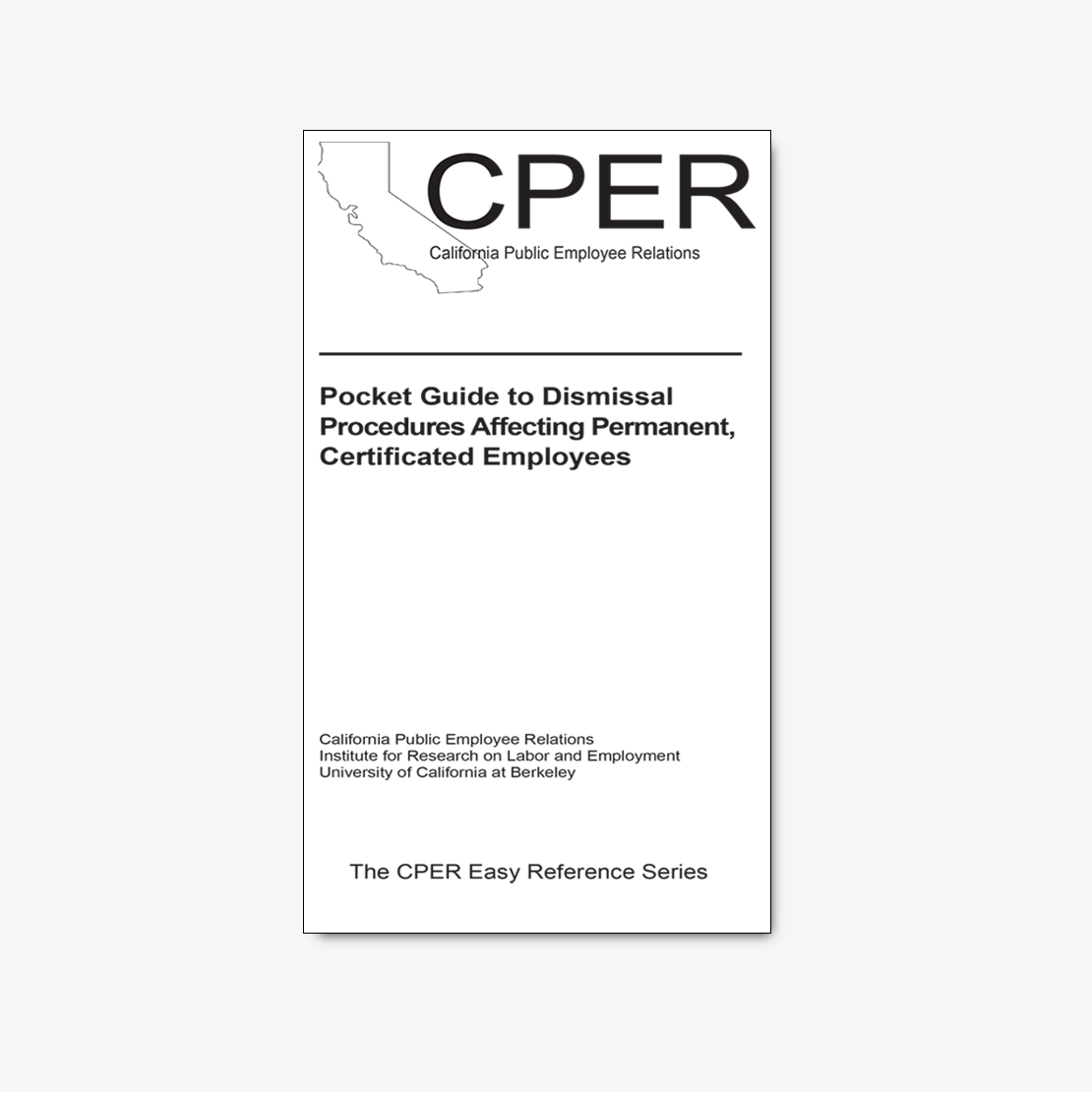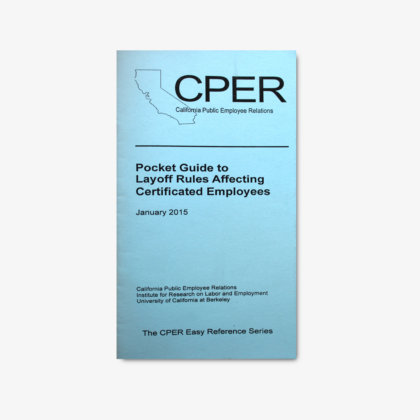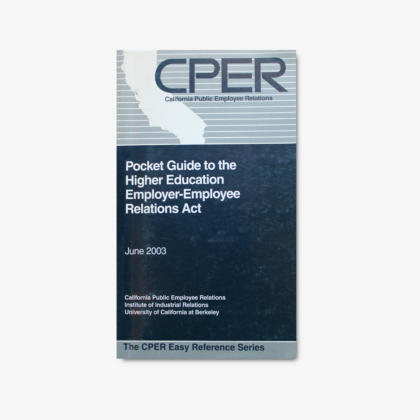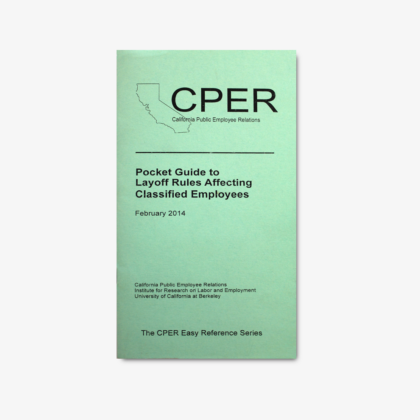For the education community….
Effective January 1, 2019, new statutory authority governs dismissals and suspensions of permanent certificated employees. This law follows AB 215, effective January 1, 2015, which achieved the most significant overhaul of the dismissal statutes since 1983.
This new edition of the dismissal guide focuses on the resulting changes, and covers, albeit briefly, the full reach of the dismissal process, including unchanged portions.
Table of Contents
- New Statutory Authority (Page 1)
- Dismissal and Suspension, Generally (Page 2)
- Statutes Preempt Collective Bargaining Agreement (Page 4)
- Automatic Dismissal Permitted in Limited Circumstances (Page 4)
- Just Cause for Dismissal Under Section 44932 (Page 4)
- Ground for Dismissal Enumerated in Section 44932(a) (Page 5)
- Generally (Page 8)
- Eleven Enumerated Grounds for Dismissal Under Section 44932 (Page 9)
- Added Responsibilities in Cases of Egregious Misconduct (Page 9)
- Procedures for All Charges Other Than Solely Egregious Misconduct (Page 11)
- Statement of Charges (Page 11)
- Notice of Intent to Dismiss (Page 11)
- Generally (Page 11)
- Notice of Intent to Dismiss sufficient to initiate hearing (Page 11)
- Time limits (Page 12)
- Service requirements (Page 12)
- Prior Written Notice Required Only in Cases of Unprofessional Conduct and Unsatisfactory Performance (Page 13)
- Employee’s Demand for a Hearing (Page 14)
- Immediate Suspension (Page 14)
- Immediate suspension permitted (Page 14)
- Employee’s right to appeal suspension (Page 14)
- Leave of Absence When Criminal Charges Are Pending (Page 15)
- Mandatory leave offenses (Page 15)
- Optional leaves offenses (Page 17)
- Discovery (Page 17)
- Initial disclosures (Page 17)
- Supplemental disclosures required (Page 18)
- Additional prehearing disclosures required (Page 18)
- Disclosure of experts (Page 19)
- Depositions (Page 19)
- Review of discovery issues (Page 19)
- Conduct of the Hearing (Page 20)
- Timing of the hearing (Page 20)
- Choice of adjudicators (Page 20)
- Waiver of CPC permitted (Page 20)
- Commission on Professional Competence (Page 20)
- Prehearing and settlement conference (Page 22)
- Location of the hearing (Page 22)
- Decisionmaking (Page 22)
- Hearing conducted by a single ALJ (Page 22)
- Hearing conducted by a CPC (Page 23)
- Costs of the hearing (Page 24)
- Evidence (Page 25)
- Testimony or evidence concerning students (Page 25)
- The four-year rule: 4944(b)(2) (B)1 (Page 25)
- Procedure for Charges Based Solely on Egregious Misconduct (Page 27)
- Generally (Page 27)
- Statement of Charges (Page 27)
- Notice of Intention to Dismiss (Page 27)
- Generally (Page 27)
- No time limits (Page 27)
- Employee’s Demand for a Hearing (Page 28)
- Accusation and Notice of Defense Required to Initiate the Hearing Process (Page 28)
- Immediate Suspension (Page 28)
- Leave of Absence When Criminal Charges Are Pending (Page 29)
- Discovery (Page 29)
- Conduct of the Hearing (Page 30)
- Timing of the hearing (Page 30)
- ALJ hears case alone (Page 30)
- Prehearing and settlement conferences (Page 30)
- Location (Page 30)
- Determinations and consequences (Page 31)
- Costs of the hearing (Page 31)
- Evidence (Page 32)
- Effect of suspension (Page 32)
- Four-year rule: 44944(d)(3) (Page 32)
- Testimony or evidence concerning students (Page 33)
- Judicial Review (Page 34)
- Review by Administrative Mandamus (Page 34)
- Standard of Judicial Review (Page 34)




